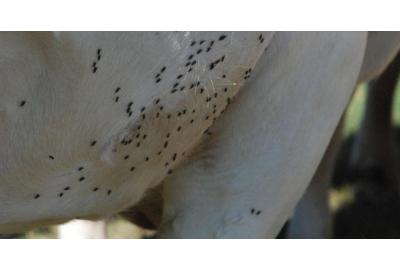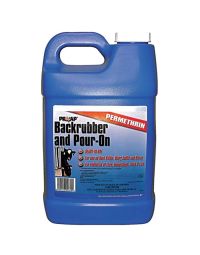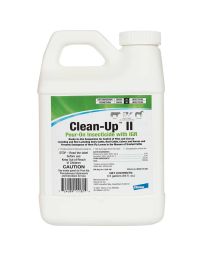Beef and dairy producers know all too well the economic damage fly infestations can cause in livestock operations. Reduced milk production, decreased feed efficiency and disease transmission between animals cause economic loss.
Fortunately there is a broad product selection of insecticides for use on animals as well as in facilities to help control fly populations. While these products can work well, farmers must also address the environment that allows flies to congregate, breed and multiply.
Flies tend to congregate in areas that provide cover for them to breed and rest. Fence lines, feed aprons, areas of unmowed vegetation and along feed bunks are popular areas to congregate and breed. It is important to identify these areas and alter the fly habitat as much as possible. Management steps could include removing spilled feed from along bunk lines and feed aprons, minimizing areas of standing water by providing drainage or filling areas with gravel, and mowing grassy areas adjacent to barns or feedlot pens.
Insecticide products have specific labels regarding which classes of animals they can be used on as well as established meat and milk withdrawals.
The delivery methods of insecticides vary depending on the type of animal and their production setting. Insecticides can be used in the form of ear tags, pour-ons, sprays, dusts, baits and feed through products. Farmers should consult their animal health professional to choose which delivery method best suits your operation.
It is important to correctly identify or anticipate which type of fly population a livestock operation will be dealing with. House flies and stable flies will most likely be found in a confinement situation. Horn flies and face flies are most likely to be found on pasture. Correct identification of the type of flies is important so that management steps can be targeted to the correct fly population.
Fly season will be upon us soon, so it is best to anticipate potential problems and take corrective action before the season begins.




![Ultra Saber Pour-On Insecticide [1 Gal]](https://www.armoranimalhealth.com/media/catalog/product/cache/e62b29cbfd1c8a243018c6ffc350ffcf/3/4/34187.jpeg)
![Repel-X Insecticide & Repellent R-T-U [32 oz]](https://www.armoranimalhealth.com/media/catalog/product/cache/e62b29cbfd1c8a243018c6ffc350ffcf/r/e/repel-x_insecticide_repellent_r-t-u_32_oz_.jpg)
![UltraShield EX Insecticide & Repellent [Gallon]](https://www.armoranimalhealth.com/media/catalog/product/cache/e62b29cbfd1c8a243018c6ffc350ffcf/u/l/ultrashield_ex_insecticide_repellent_gallon_.jpg)